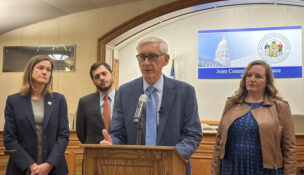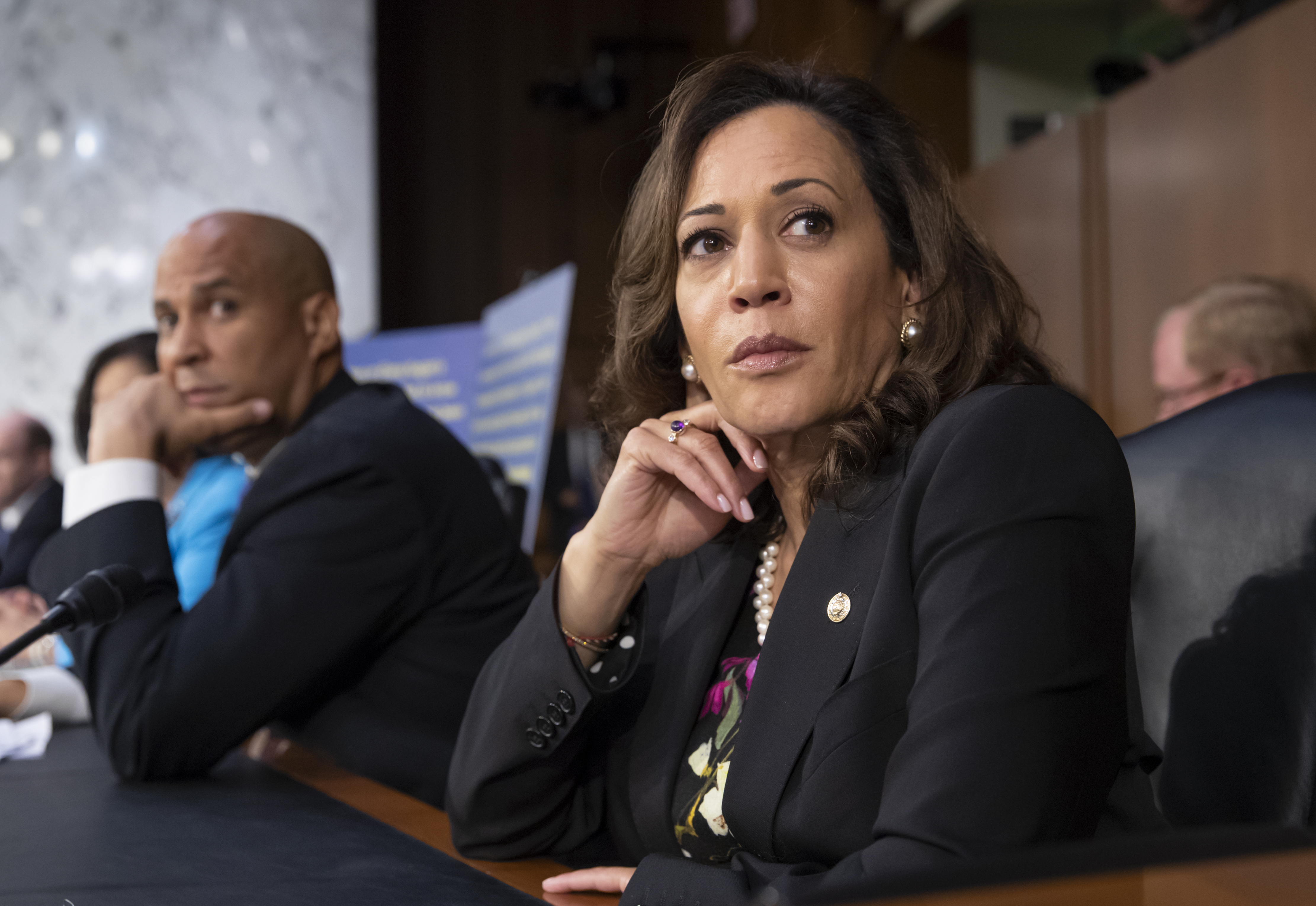‘Intrudes upon freedoms’ or ‘undermines legitimacy’ of court: Justices weigh in on challenge to Dane Co. health order
By: Michaela Paukner, [email protected]//September 11, 2020//
‘Intrudes upon freedoms’ or ‘undermines legitimacy’ of court: Justices weigh in on challenge to Dane Co. health order
By: Michaela Paukner, [email protected]//September 11, 2020//
The Wisconsin Supreme Court narrowly decided to allow Dane County students to return to in-person classes, issuing an order with strong opinions for and against the petitioners’ arguments.
The high court decided 4-3 to take up a challenge to a Public Health Madison and Dane County order that required students in grades 3-12 to attend online instruction because of the COVID-19 pandemic. It also issued a temporary injunction that immediately blocked the health order.
Chief Justice Patience Roggensack and justices Rebecca Bradley, Brian Hagedorn and Annette Ziegler made up the majority, and justices Rebecca Dallet, Ann Walsh Bradley and Jill Karofsky dissented.
Here’s a summary of Thursday’s order and the reasoning behind the decision and dissent:
The order
The order issued by the state Supreme Court on Thursday:
- Granted petitions for leave to commence an original action and state Supreme Court assumes jurisdiction.
- Consolidated three matters challenging the Dane County health order.
- Required the filing of a single, combined brief within 30 days that shall not exceed 75 pages, followed by the filing of a single, combined brief by the respondents of not more than 75 pages.
- Required an appendix to the petitioners’ brief with a stipulation from all parties on the facts that are undisputed and the facts that may be in dispute.
- Temporarily enjoined provisions of the emergency order prohibiting schools from providing in-person instruction.
Majority’s explanation
The majority said that, judging by the briefing so far, the petitioners were likely to succeed on the merits of their claim.
“Multiple arguments—constitutional, statutory, and administrative—are lodged against the Order,” the order said. “While reserving the remaining claims for later disposition, we conclude that local health officers do not appear to have statutory authority to do what the Order commands.”
The majority said Wisconsin Stat. § 252.02 (2017–18) subsection (3) grants the Department of Health Services the power to close schools to control outbreaks and epidemics in one subsection, but the next section, Wis. Stat. § 252.03, omits the power to close schools in its grant of authority to local health officers.
“This differential grant of power must be given full meaning and effect,” the order said.
Lawyers for Janel Henrich, the director of Public Health Madison and Dane County, argued that she wasn’t closing schools, just preventing in-person instruction, and the statute gives her the ability to do what is “reasonable and necessary for the prevention and suppression of disease.”
But the majority said the text doesn’t extend the DHS’ power to close schools.
“In short, Petitioners are likely to succeed on the merits of their argument that the Order’s broad closure of schools in this case is not within the statutory grant of power to local health officers in Wis. Stat. § 252.03,” the majority wrote.
And if the court didn’t grant the injunction, the majority said the order would cause irreparable harm to schools, parents and children.
“Overriding the choices of parents and schools, who also undoubtedly care about the health and safety of their teachers and families, intrudes upon the freedoms ordinarily retained by the people under our constitutional design,” the order said. “Since it appears the Order does not rest on a sound legal basis, a consideration of the equities leads us to conclude a temporary injunction is appropriate.”
Dissenting opinion
Justice Rebecca Dallet wrote a dissent, in which Justices Ann Walsh Bradley and Jill Karofsky joined. Dallet said some members of the court “repeated the mantra of local control” throughout the pandemic, but those same justices now interfered with a local health officer’s ability to make those decisions.
“In fact, by assuming original jurisdiction over this action, the majority, contrary to prior exhortations, will not even allow a local circuit court judge to resolve a local dispute over the validity of a local public health ordinance,” Dallet wrote.
She said the “abrupt about-face” by the majority makes the state Supreme Court look biased in the eyes of the public.
“(T)he majority’s impulsive exercise of both our original jurisdiction and equitable authority promotes a type of forum shopping that undermines our legitimacy as a neutral, apolitical arbiter and signals] to lower courts that this court does not trust their ability to fairly apply the law,” Dallet wrote.
Dallet said the three petitions have several fact-intensive challenges about a local order, which she concluded “squarely belong in a circuit court, before the local judges elected by the citizens of that locality.”
The dissenting justices believed the petitioners didn’t show a reasonable probability of success on the merits or constitutional claims. They said the petitioners also failed to provide evidence of irreparable harm to children or parents by maintaining online learning, only that remote instruction is “less than ideal.”
“Everything about the pandemic is less than ideal but inconvenience does not rise to the level of an irreparable harm that this court must remedy,” Dallet wrote. “On the other hand, granting an injunction may cause irreparable harm in the form of risk of severe illness and death.”
Justice Rebecca Bradley’s response
Justice Rebecca Bradley wrote a concurring opinion criticizing Dallet’s dissent. Bradley said Dallet “decries the court’s interference” with Henrich’s ability to make health decisions and “goes on to lament the court” not allowing the circuit court to resolve the dispute.
Bradley said no challenge to the order was filed in Dane County Circuit Court, leaving the state Supreme Court to exercise its constitutional authority to decide a case of statewide importance.
“This is exactly the type of case the people of Wisconsin elected us to decide,” Bradley wrote. “Declining to hear the case would amount to an abdication of the court’s institutional responsibilities constitutionally conferred on the state’s highest court.”
Legal News
- Former law enforcement praise state’s response brief in Steven Avery case
- Eric Toney announces re-election bid for Fond du Lac County District Attorney
- Former Wisconsin Democratic Rep. Peter Barca announces new bid for Congress
- Republicans file lawsuit challenging Evers’s partial vetoes to literacy bill
- More human remains believed those of missing woman wash up on Milwaukee Co. beach
- Vice President Harris returning to Wisconsin for third visit this year
- Wisconsin joins Feds, dozens of states to hold airlines accountable for bad behavior
- Trump ahead of Biden in new Marquette poll
- Bankruptcy court approves Milwaukee Marriott Downtown ‘business as usual’ motion
- New Crime Gun Intelligence Center to launch in Chicago
- Arrest warrant proposed for Minocqua Brewing owner who filed Lawsuit against Town of Minocqua
- Wisconsin Supreme Court justices question how much power Legislature should have
WLJ People
- Power 30 Personal Injury Attorneys – Russell Nicolet
- Power 30 Personal Injury Attorneys – Benjamin Nicolet
- Power 30 Personal Injury Attorneys – Dustin T. Woehl
- Power 30 Personal Injury Attorneys – Katherine Metzger
- Power 30 Personal Injury Attorneys – Joseph Ryan
- Power 30 Personal Injury Attorneys – James M. Ryan
- Power 30 Personal Injury Attorneys – Dana Wachs
- Power 30 Personal Injury Attorneys – Mark L. Thomsen
- Power 30 Personal Injury Attorneys – Matthew Lein
- Power 30 Personal Injury Attorneys – Jeffrey A. Pitman
- Power 30 Personal Injury Attorneys – William Pemberton
- Power 30 Personal Injury Attorneys – Howard S. Sicula











